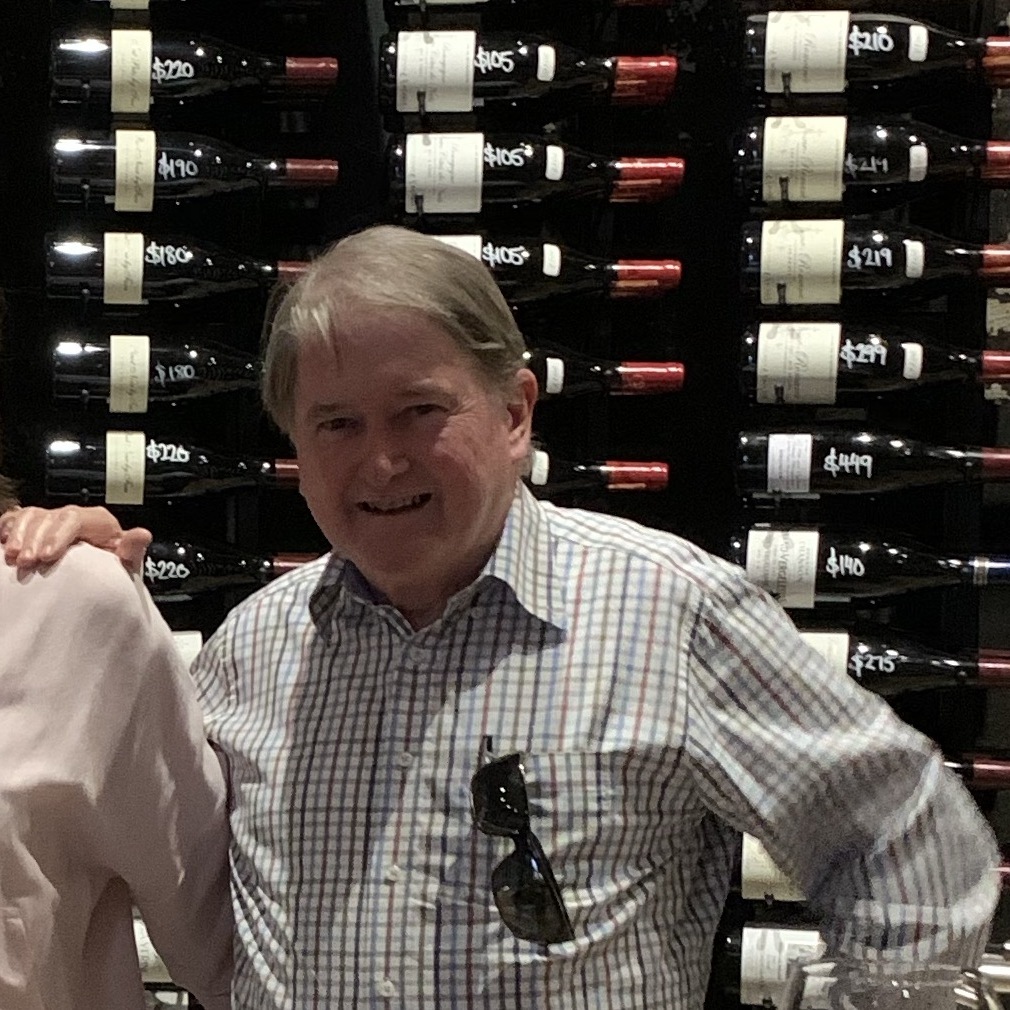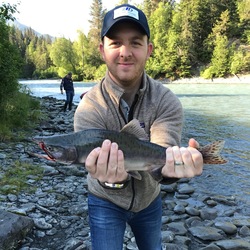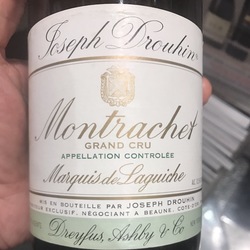5 Top Five Collection
Regusci
1932 Proprietary Stags Leap District Cabernet Sauvignon Merlot 2012



Château La Fleur de Boüard
Lalande de Pomerol Red Bordeaux Blend 2005
The nose reveals, dark currants, ripe, slightly liqueur; blackberries, black plum, dark cherries, black raspberries, charred strawberries, hints of cooked rhubarb and raspberries. Mixed berry licorice/cola, anise, vanilla, cinnamon, nutmeg, touch clove, steeped fruit tea, herbaceous notes, leather, tobacco, charcoal, wood shavings, limestone minerals, dry stones, a little forest floor, dark fresh florals, lavender & violets.
The body is round, lush with some dusty tannins on the long set. It’s really beautiful right now but, there is still better things ahead over the next 5-8 years before it peaks. It’s silky & satiny. The structure, length, tension and balance are really starting to hit its stride. Dark currants, ripe, slightly liqueur; blackberries, black plum, dark cherries, black raspberries, plum, charred strawberries, hints of cooked rhubarb and raspberries. Mixed berry licorice/cola, anise, vanilla, cinnamon, nutmeg, touch clove, mocha powder, medium dark spice, steeped fruit tea, herbaceous notes, mint, expresso roast, leather, cedar, limestone minerals, dry stones, crushed dry rock & clay, a little forest floor, dark fresh florals, lavender & violets. The acidity is round & beautiful...really shows the greatness of the vintage. The finish is; lush, rich, ripe, elegant, well balanced, polished and quite persistent.
Photos of, Chateau La Fleur de Bouard, the tops of the stainless steel tanks that flow by gravity into the tanks that hang from the other side of the floor/ceiling and their Merlot vines.
I think this was under $35 when I bought it in futures.
Producer history & notes...Chateau La Fleur de Bouard was started by Hubert de Bouard, the owner of Chateau Angelus and Chateau Bellevue in St. Emilion. Hubert de Bouard purchased the vineyard from in 1998. This is a relatively new wine, as the first year for the wine was produced with the 2000 vintage.
Chateau La Fleur de Bouard is produced from a specific a two hectare parcel of old vines that are around 45 years of age, situated on the Lalande de Pomerol Plateau. The vineyard for Chateau La Fleur de Bouard Le Plus is planted to 100% old vine Merlot.
In 2011, La Fleur de Bouard completed a multi-year, top to bottom reconstruction of their entire wine making making facilities and the chateau, making this one of the most modern estates in the Right Bank. The most striking new feature is their hanging, reverse, conical, stainless steel vats as shown in my photos.
The production of La Fleur de Bouard sees a five day cold soak at 10 degrees Celsius and a four-week maceration in “OVNI” stainless steel tanks. The wine is vinified in a combination of stainless steel vats and short, squat shaped oak barrels. The wine receives regular pigeages.
Malolactic fermentation takes place in 100% new, French oak barrels from four different coopers, Taransaud (40%), Demptos (40%), Darnajou (15%) and Vicard (5%). Aging sur lies takes place in 100% new, French oak barrels for an estimated 33 months prior to bottling. The wine requires collaring time for the oak to fully integrate into the wine, and for the secondary notes to develop. — 6 years ago
Domaine de Cambes
Red Bordeaux Blend 2016
Last time I drank this was five years ago according to delectable. Pulled from the cellar for a ribeye. Luscious. Rich and dense but not over the top. Pretty decent acid holding it together. Oak was a hot mess 5 years ago, now it is fully integrated. Fruit is maturing but still has freshness. still plenty of tannin. In a good spot. probably 2026 for my final bottle.. — 9 months ago
Jones Family Vineyard
Napa Valley Cabernet Sauvignon 2009
The follow up to the 03 Leonetti. @Paul T- Huntington Beach & I have been telling readers about older Jones Family Vineyards for some time. If you haven’t had or not tried this producer it will be the last time I try to entice to you to try this producer. Talking about it more will only drive up the prices on the secondary market.
This 09 is damn beautiful after nearly a four hour decant but it is still fairly youthful.
It is ruby, lush, gorgeous, ripe fruits of; blackberries, black raspberries, black plum with skin, dark cherries, plum, hues of purple, blue fruits & raspberries, poached strawberries, black licorice, mixed, dark berry cola, steeped black tea, dry crushed rocks, limestone minerals, dry top soil, dry herbs, hints of eucalyptus, dry clay, dry tobacco, new leather, spice, nutmeg, clove, cinnamon & vanillin, withering red & dark florals framed in violets & lavender, beautiful round acidity, beautiful; balance, tension, structured, smartly polished finished that lasts minutes.
Still needs another 5-8 years to show its best self.
The Jones Family vineyard is located off Bale Lane in Calistoga and was planted to all five Bordeaux varieties by David Abreu in the early 1990s. Heidi Barrett made the wines until 2008, and Thomas Rivers Brown now makes the wines. — a year ago
Heitz Cellar
Napa Valley Cabernet Sauvignon 2005
I’ve eyeballed this 05 over the last couple of years...thinking, I should drink this up. One thing about Heitz wines made by the Heitz family is they will age very well. We’ll see what happens to their wines now that they have been sold to corporate owners.
This 05 was pulled from my secondary cabinet storage; which means not EuroCave.
I spent three days sending 200 plus bottles to auction and rearranging my collection. So, this was standing free. Time to drink up, right? Nope. This still has another 5-7 years plus of good drinking ahead even if I laid it down in a dark closet with added humidity. I can, because I live in a cool climate. So, it would be just fine.
The nose reveals, ripe, still fresh fruits of; dark currants, blackberries & black raspberries. Black plum pudding, black cherries, baked strawberries and beautiful blue fruits that always come out nicely in older Heitz wines. Anise to black licorice, steeped dark fruit teas, purple & blue fruit liqueur/cola, limestone minerals, crushed rocks, dark chocolate, milk chocolate, caramel, mocha, vanilla, cinnamon, clove, touch of nutmeg, dark spice, dry & fresh herbs, mint, some soft leather & dry tobacco, graphite notes, dark, rich, black, earth with fresh & withering; dark, red, purple flowers with violets and hints of lavender.
The body is; full, ripe, lush and has beautiful texture. Velvety, dark, tarry, tannins. The tension, structure, length and balance are where I love them...just over the top of the bell curve. This is still so fresh. Dark currants, blackberries & black raspberries. Black plum pudding, black cherries, baked strawberries & rhubarb shine on the long open & palate set with beautiful blue fruits. Anise to black licorice, steeped dark fruit teas, purple & blue fruit liqueur/cola, red licorice, limestone minerals, river stone, crushed rocks, dark chocolate, milk chocolate, caramel, mocha, vanilla, cinnamon, clove, touch of nutmeg, dark spice with just the right amount of palate heat, dry & fresh herbs, mint, some soft leather & dry tobacco, graphite notes, dark, rich, black, earth with fresh & withering; brilliant, dark, red, purple flowers with violets and hints of lavender. The acidity is round and perfect. The long finish is; very well balanced fruit & earth, rich, lush, ripe, elegant, delicious and dances on the palate with long persistence.
It’s a steal today considering I paid $29 in 07/08. Delectable tracks it at $130. Beautiful wine tonight.
Photos of; their tasting bar on Hwy 29, sign and tasting room vines in Saint Helena, tasting room building and sitting area just outside their tasting room. — 6 years ago
Château Brane-Cantenac
Grand Cru Classé en 1855 Margaux Red Bordeaux Blend 2005
I have a six-pack of this 05. I thought after 10 years in bottle, it would be interesting to check in on its evolution. While tasty, I’ll wait another 8-10 to open another. Even after 2-3 hours in the decanter, it’s still a very young adolescent. On the nose, slightly sour blackberries & dark cherries, dark currants, baked black plum, haunting blue fruits, anise, whiff of spice, steeped tea, dry stones, dry crushed rocks with dry top soil, caramel, vanilla with fresh & dry red florals. The body is thick & full. Tannins are starting to round out. It’s velvety on the palate. The fruits are; bright, fresh & ripe and really show the greatness of the 05 vintage. Dark currants, blackberries, dark cherries, baked black plum, haunting blue fruits, baked strawberries, cherries, raspberries on the long set, dark spice, clay & loamy dry top soil with crushed rocks, dry stones, cigar with ash, graphite, dry stems, slight herbaceous character, mint, used leather, clove, caramel, vanilla, fresh & dry red florals with violets. The round acidity is about perfect. The structure and length are still strong. The balance is in harmony. As for the long finish, it’s lush, ruby, rich and well polished. Photos of; Chateau Brane Cantenac, large wood vats, Henri Lurton and Estate vines. Producer notes and history...Chateau Brane Cantenac began in the early 17th century. At the time, the estate was known as Domaine Guilhem Hosten. Even that far back, wine was produced from the property. In fact, the wine was so highly regarded it was one of the more expensive wines in Bordeaux. It sold for almost as much money as Brane Mouton. This is interesting because of who went on to buy the vineyard in the 1800’s. The Baron of Brane, also known as “Napoleon of the Vineyards”, purchased the Chateau in 1833. At the time of the sale, the estate was called Chateau Gorce-Guy. To get the funds needed to purchase the Margaux vineyard, the Baron sold what is now called Mouton Rothschild, which was at the time of the sale, known as Chateau Brane-Mouton. Not such a good move with hundreds of years in hindsight! In 1838, the Baron renamed property taking his name and the name of the sector where the vineyards were located and called it Chateau Brane Cantenac. The Chateau later passed to the Roy family, who were well-known in the Margaux appellation in those days, as they owned Chateau d’issan. Moving ahead to 1920, the Societe des Grands Crus de France, a group of merchants and growers that owned several chateaux located in the Medoc including; Chateau Margaux, Chateau Giscours, and Chateau Lagrange in St. Julien, purchased Chateau Brane Cantenac. Five years later, M. Recapet and his son-in-law, François Lurton, took over Brane Cantenac along with Chateau Margaux. Lucien Lurton (the son of François Lurton) inherited Brane Cantenac in 1956. Today, the estate is still in the hands of the Lurton family. Brane Cantenac is owned and run by Henri Lurton. After being given the responsibility of managing Brane Cantenac, it was under the direction of Henri Lurton that large portions of the vineyard were replanted. Vine densities were increased, the drainage systems were improved and the plantings were also, slowly changed. The vineyard of Brane Cantenac is planted to 55% Cabernet Sauvignon, 40% Merlot, 4.5% Cabernet Franc and .5% Carmenere. Carmenere was used for the first time in the 2011 vintage. The only other Chateau I know that still uses Carmenere is Clerc Milon. The 75 hectare Left Bank vineyard of Brane Cantenac is essentially unchanged since it earned Second Growth status in the 1855 Classification. At least that is the case with the 45 hectares used to produce the Grand Vin of Brane Cantenac. Those 45 hectares are planted surrounding the Chateau. Those vines are located just in front of the Cantenac plateau and are the best terroir that Brane Cantenac owns. They have other parcels, which are further inland and much of those grapes are placed into their second wine, Le Baron de Brane. Those additional hectares can be divided into 3 main sections. Behind the Chateau, they have 15 hectares of vines on gravel and sand, 10 hectares across the road with sand, gravel and iron and a 13 hectare parcel with gravel called Notton, which is used for their second wine. The vineyard is planted to a vine density that ranges from 6,666 vines per hectare on the plateau and up to 8,000 vines per hectare for the vines located behind chateau, in their sandier soils. The higher levels of vine density are always found in the newer plantings. The terroir of Brane Cantenac consists of deep gravel, sand and clay soil. Experiments in the vineyards are currently looking at becoming more organic in their vineyard management. Today, more than 25% of Brane Cantenac is farmed using organic farming techniques. It is expected that over time, the amount of hectares farmed with organic methods will be increased. Brane Cantenac has gone through 2 relatively recent modernization’s in 1999, when they added began adding the first of their smaller vats to allow for parcel by parcel vinification and then again in 2015 when they completed a much more complete renovation of their cellars and vat rooms. While Brane Cantenac is a traditional producer, they are no stranger to technology as they were one of the first estates to embrace optical grape sorting machines. In very wet vintages, they can also use reverse osmosis. To produce the wine of Chateau Brane Cantenac, the wine is vinified in a combination of temperature controlled, traditional, 22 oak vats, 18 concrete tanks and 20 stainless steel vats that vary in size from 40 hectoliters all the way up to 200 hectoliters, which allows for parcel by parcel vinification. 40% of the fermentation takes place in the oak vats. The oldest vines are vinified in vats that are selected to allow for separate parcel by parcel vinification. The younger vines are vinified more often together in the same vats. However, the Carmenere is entirely micro-vinified, meaning that those grapes were completely vinified in barrel, using micro-vinification techniques. This can also happen because the amount of grapes produced is so small. Some vats can be co-inoculated, meaning they go through alcoholic fermentation and malolactic fermentation simultaneously. At Chateau Brane Cantenac, malolactic fermentation takes place in a combination of French oak tanks and barrels. The wine of Brane Cantenac is aged in an average of 60% new, French oak barrels for 18 months before bottling. The initial 2 months of aging is done with the wine on its lees, which adds more depth to the wine. There second wine is Le Baron de Brane. Le Baron de Brane is not new. In fact, previously, the second wine went under the name of Chateau Notton, which took its name from one of the main parcels where the grapes were planted. During the late 1950’s and into the 1960’s, having a second wine was important as the estate declassified 3 vintages, due to extremely poor, weather conditions in 1956, 1960 and 1963. Production of Chateau Brane Cantenac is about 11,000 cases per year. — 7 years ago

Bouchaine
Bacchus Collection Estate Vineyard Pinot Meunier 2018
Have not had 100% Pinot Meunier that was not from Champagne and in bubble form. This is from Napa/Carneros.
Still young and would prefer to have this in 3-5 yrs.
The palate is dark fruits. Not quite Santa Rita Hills extraction but more than most Northern California.
It is still a bit angular. Blackberries, black raspberries, black plum w/ heavy skin, dark cherries, plum and some poached strawberries. Grainy limestone, dry stone, dark top soil, lots dark spice, cinnamon stick, clove, nutmeg, some pepper, dry tobacco, new leather, grilled meats, dry tumble weed, dry, red, dark flowers with violets, fresh acidity and a balanced, highly structured/tensioned, polished finish that lasts 90 seconds.
Many would call CDP on this blind. — a year ago

Burntshirt Vineyards
O Cellars Meritage Red Blend 2019
My first Burntshirt bottle! I opted to open the Meritage first to see what their overall fruit profile could produce when blended for optimal experience… Quite impressed and can honestly say that it would be amongst the top 3–5 producers in the state… The soil insight are capable of ripening especially in this optimal vintage. All five Bordeaux varietals used and leads to a Monticello or Breaux-style blend. Rich, with plenty of heft, this build is enough but it’s in no way special or distinct. It reflects competency in farming and in winemaking, but lacks a real pizazz or layers of nuance. It’s just nice ;) the 90 score reflects overcoming the obstacles of latitude and possible excess rains. It’s really good by NC standards, which is a victory that they should be proud of. We put this against burgers and baked beans and we were satisfied, that’s a lot to ask of a cab sauv driven blend ;) — 3 years ago
Bouchard Père et Fils
Ancienne Cuvée Carnot Volnay Caillerets 1er Cru Pinot Noir 2005
Five single-vineyard CA Pinots vs 5 Burgs: Gevrey-Chambertin, Vosne-Romanee + three 1er Crus Beaunes. All 2005s. Rob Jensen, owner, and Sue Ryan, lead wine educator at Testarossa joined our group for the tasting. This was our top rated wine although more middle of the pack for me. — 4 years ago
Hope & Grace
Napa Valley Petit Verdot 2014
Solid 93, almost 94. This wine is 100% PV. A bit young, this one pours a dark, deep violet to the glass. There is no way light is getting through this monster. The nose is pepper and spice cake. The entry is fruitcake, pepper, allspice. The middle gains a youthful sweet tobacco leaf on top of a fruitcake red and black spice. The finish is tannic without a doubt, and I feel that another year or so would do this one quite well. A 93.45 stunner tonight, with potential to improve over the next 5 years. This one would top the 25th Anniversary William Harrison PV depending upon the style you prefer for PV. Gonna have to acquire a few for the collection! Nice pull @Shay A — 7 years ago










Somm David T
Independent Sommelier/Wine Educator
I drank a fair amount of Regusci back in the day, but that was when Charles Hendricks was the Winemaker. His last full Regusci vintage, birth to finish was 2013. He did work most of the 2014 growing season, but didn’t vinify it. I guess if you’re going to go out 2013 is a grand vintage to do it. He trained their current Winemaker, but he makes a different style than Charles. Every Winemaker wants to do their own thing. I can’t say blame him/them, but I can decide whether I want to buy & drink them.
When I find older, well preserved Regusci vintages Charles made on the secondary market, I buy them. Not many pop-up anymore.
Owner Jim Regusci inspired the creation of “The 1932.” It is an homage to Regusci's estate vineyards and dedicated to Gaetano Regusci, who acquired the ranch in 1932. They farmed agriculture long before they made wine. First time having this bottling. 2012 is primarily Cabernet with Merlot & a splash of Cabernet Franc.
This is a classic Charles-Regusci creation. Notes after a 45 minute decant. It’s a strong 93 that pushes 94.
The nose is dark & brooding. Ripe; blackberries, black raspberries, black plum skin, dark cherries, some blueberries with raspberries on the edge of the glass. Steamy oak to cedar, dry tobacco, used leather, dark tarriness, anise that rounds out into licorice, black tea, dark spices, some dry herbs-light sage & bay leaf, dry crushed gravel w/ limestone, clove oil, nutmeg, cinnamon, vanillin, baking soda, melted, dark chocolate, caramel, sweet, black turned earth w/ leaves, dark, red flowers framed in violets & lavender.
Ripe but with a dry-ish feel; blackberries, black raspberries, black plum skin, dark cherries that has a liqueur feel to them, ripe, juicy strawberries as it opens up further, some blueberries with raspberries hovering over the top. Shaved oak to cedar, dry tobacco, used leather, dark tarriness, anise that rounds out into licorice, black tea, dark spices with some palate heat, some dry herbs-light sage & bay leaf, dry crushed gravel w/ limestone, dry stone with dust, charcoal notes, clove oil, nutmeg, cinnamon stick, vanillin, baking soda, melted, dark chocolate, caramel, sweet, black, turned earth w/ leaves, dark, red flowers framed in violets & lavender. A slight burn of alcohol on the center tongue, not the back of the throat, which is a bit odd, dark & red slightly withering but candied flowers framed in prominent lavender & violets, full round acidity with a well; tensioned, structured, balanced, elegant finish that lands squarely on evolved earth, dark spice and lasts minutes.
This is still ascending and will reach its peak in three to five years. It will slowly descend over the next 5-8 years.
Photos of; their tasting room/bar, fantastic picnic area, for sale vegetable/fruit cart and a long shot of their estate vineyard & winery. — 2 months ago